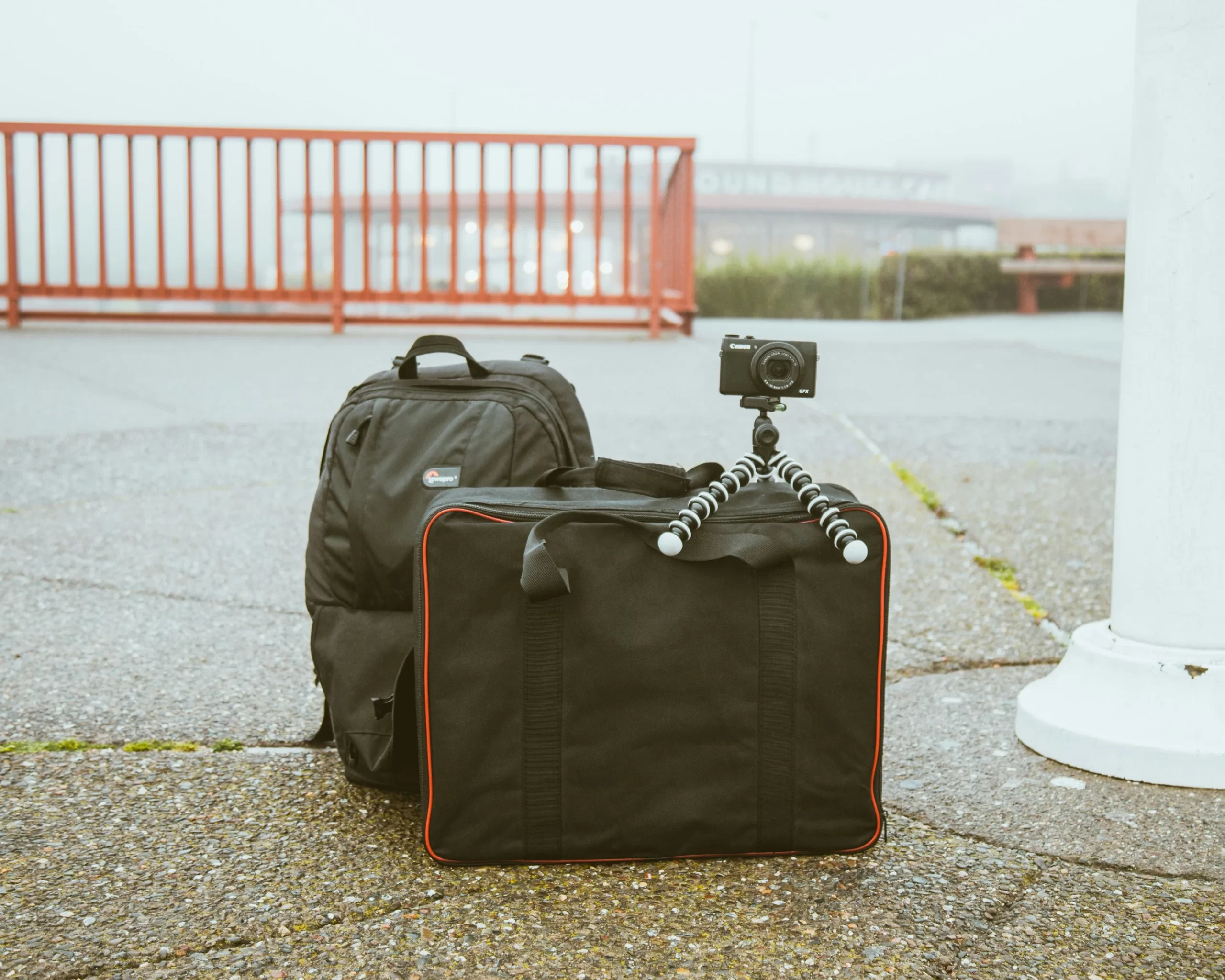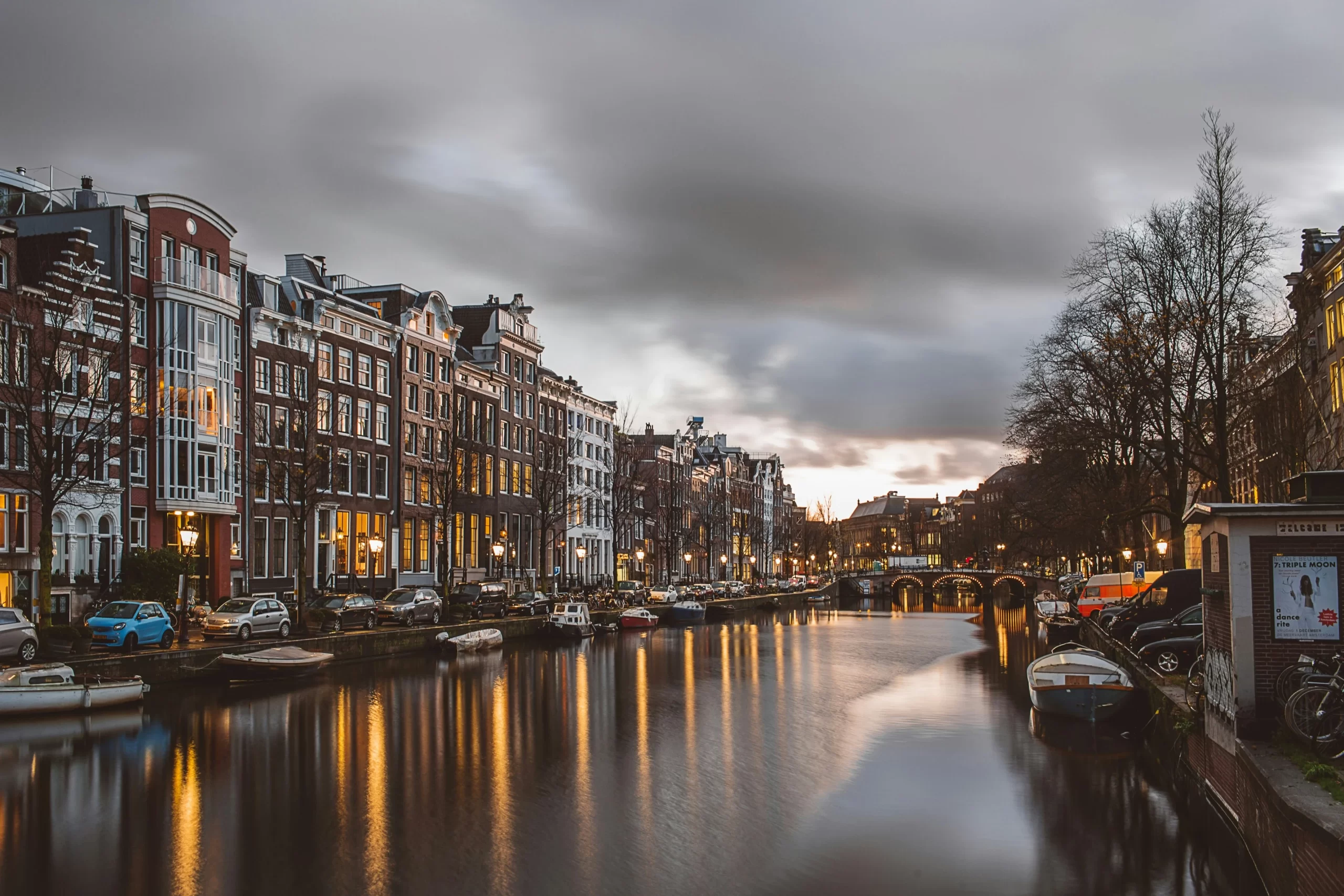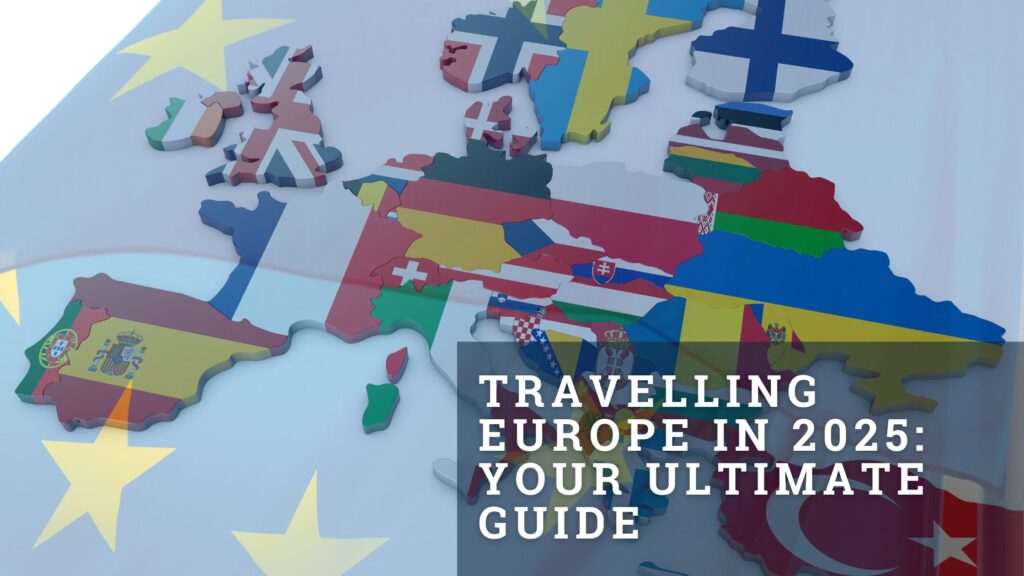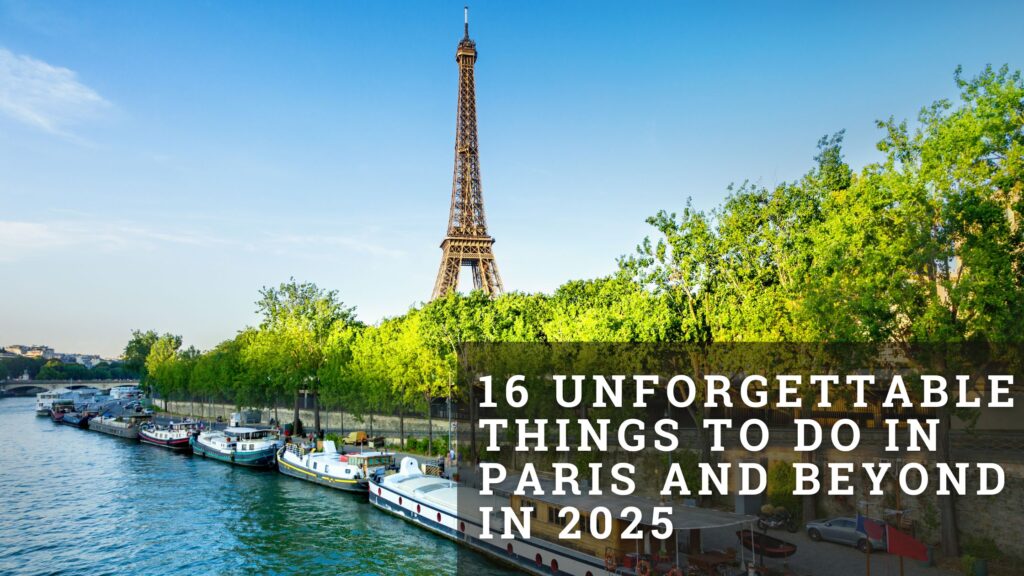Dreaming of cobblestone streets, ancient landmarks, and vibrant cultures? Europe in 2025 is calling your name! Whether you’re planning your first solo trip or an adventure with close friends, this guide will set you up for success with these couples tips for travelling Europe the right way. From navigating transportation to discovering must-see destinations, we’ll help you unlock the secrets of this continent like a pro.
Why Europe is Perfect for Young Solo Travelers or Small Friend Groups
Europe is a melting pot of cultures, each country offering something unique – from the historic charm of Italy to the edgy vibes of Berlin. It’s an ideal destination for young travelers seeking independence or shared memories with friends. The continent’s efficient public transport, abundant youth hostels, and diverse activities make it accessible for anyone on a budget. Not to mention, you’ll meet fellow adventurers from around the world, forming connections that last a lifetime.
Travelling Europe: Tips for your Pre-Trip Planning
Passport and Visa Requirements
Before you pack your bags, make sure your passport is valid for at least six months beyond your planned return date—many European countries require this. Non-EU travelers should also prepare for the ETIAS (European Travel Information and Authorization System), which will be mandatory starting in 2025. This online visa-waiver application is straightforward but essential, allowing you entry to 30 European countries for up to 90 days.
Choosing Your Itinerary
When crafting your itinerary, aim for a mix of iconic landmarks and lesser-known gems. Visit classics like the Eiffel Tower in Paris, the Colosseum in Rome, and Park Güell in Barcelona. Balance these with off-the-beaten-path locations such as Hallstatt, Austria – a fairy-tale village by the lake; Porto, Portugal – known for its riverside charm and wine cellars; and Ljubljana, Slovenia – a green city with stunning architecture. Also, ensure your building an optimized itinerary accordingly with your budget. Some cities are more expensive than others, make sure you look to all possible options before booking your trip. To simplify the process, use platforms like Expedia for flexible bookings that accommodate changes to your plans. With Expedia’s user-friendly tools, you can compare accommodations, transportation, and activities all in one place, ensuring a hassle-free travel experience.
Packing Tips
Packing light is the golden rule for European travel. A carry-on suitcase or a travel backpack makes navigating trains, buses, and cobblestone streets far easier. Here’s what you need:
- For Summer: Opt for lightweight clothes, breathable fabrics, and comfortable walking shoes. Don’t forget sunscreen and a reusable water bottle to stay hydrated.
- For Winter: Pack warm layers, including thermal wear, a waterproof coat, and sturdy boots.
- Year-Round Essentials: Include a universal adapter, compact toiletries, a small first-aid kit, and laundry detergent sheets for quick washes.
Pro Tip: Use packing cubes to stay organized and maximize space. Roll your clothes to minimize wrinkles and fit more into your bag. Always leave a little room for souvenirs! 
Tips for Getting Around Europe
Transportation Options
Navigating Europe is easier than you think, thanks to its incredible transportation network. Here’s a breakdown of your options:
- Trains: Europe’s rail system is legendary, offering scenic routes and convenient schedules. Consider investing in a Eurail pass for unlimited travel across multiple countries. For shorter trips, platforms like Trainline can help you find the best deals and schedules.
- Budget Airlines: Low-cost carriers like Ryanair and Vueling are perfect for hopping between countries. Keep an eye out for baggage fees and remember that some airports might be located outside city centers.
- Buses: Companies like FlixBus provide an affordable way to travel long distances. While slower than trains, buses often cover routes that trains don’t, making them a great option for budget-conscious travelers.
- Car Rentals: If you’re venturing into the countryside or exploring smaller towns, renting a car can be a game-changer. Just remember to check local driving laws and ensure your license is valid in your destination.
Best Tips for Booking Transportation
- Book Early: Secure train and flight tickets a few months in advance to snag the best prices, especially during peak travel seasons.
- Be Flexible: Traveling mid-week or during off-peak hours can save you a significant amount of money.
- Use Reliable Platforms: Booking tools like Expedia and Trip.com allow you to compare various modes of transportation in one place, ensuring you find the best deals.
- Travel Apps: Download apps like Google Maps and Citymapper for real-time navigation assistance.
Pro Tip: Keep an eye on flash sales from budget airlines or train operators – they often offer massive discounts if you act fast.
Must-See Spots You Can’t Miss When Traveling Europe in 2025
Europe is a dream destination for travelers, bursting with iconic landmarks, charming streets, and unforgettable experiences. Whether you’re embarking on a solo adventure or exploring with friends, here’s a list of must-see spots that blend the classics with hidden gems. These destinations will not only fill your itinerary with awe-inspiring views but also leave you craving more.
Paris, France: The City of Light
When in Paris, the Eiffel Tower is non-negotiable, but there’s so much more to the city than its famous landmark. Montmartre offers a bohemian vibe with winding cobblestone streets, artists painting en plein air, and the Sacré-Cœur basilica providing breathtaking city views. Pro Tip: Start your day early to beat the crowds and grab croissants from a local boulangerie—Parisian mornings are pure magic. 
Rome, Italy: A Step Back in Time
Rome’s rich history makes it a must for culture enthusiasts. Tour the Colosseum, imagining the gladiatorial battles that once took place, then stroll to the Trevi Fountain, where tossing a coin ensures your return to the Eternal City. Insider Tip: Skip the midday lines by booking your Colosseum ticket in advance through platforms like Expedia. 
Amsterdam, Netherlands: A City of Canals
Amsterdam is a cyclist’s paradise, but its canals steal the show. Take a boat tour for a unique view of the city, followed by a poignant visit to the Anne Frank House. Travel Hack: Book your museum tickets online weeks ahead – they sell out fast, especially in spring when tulips are blooming nearby. 
Prague, Czech Republic: Fairytale Vibes
Prague’s charm lies in its Old Town Square, where you’ll find the Astronomical Clock and lively street performers. For a magical moment, cross the Charles Bridge at sunrise—your Instagram will thank you. Bonus: Prague is budget-friendly, ideal for solo travelers looking to stretch their euros. 
Santorini, Greece: Island Bliss
For those craving a Mediterranean escape, Santorini is unparalleled. The island’s blue-domed churches and cliffs overlooking the Aegean Sea create postcard-perfect views. Don’t miss the sunset in Oia – it’s the stuff of travel legends. Affordable Luxury: Visit in early spring or late fall to enjoy lower prices and fewer crowds. 
Hidden Gem: Ghent, Belgium
Skip the crowds of Bruges and head to Ghent for a more tranquil yet equally mesmerizing experience. Wander along the canals, marvel at medieval architecture, and visit Gravensteen Castle for a taste of history. Local Tip: Grab a pint of Belgian beer at a riverside café while soaking up the atmosphere. By adding these incredible spots to your European adventure, you’re sure to have a trip filled with unforgettable memories and Instagram-worthy moments. Whether you’re traveling solo or with your besties, Europe in 2025 is calling. Will you answer? 
Cultural Etiquette and Local Tips: Navigate Europe Like a Pro
Traveling to Europe isn’t just about sightseeing; it’s also about immersing yourself in diverse cultures. Being aware of local customs and behaviors can make your trip more enjoyable and help you connect with locals. Here’s a guide to navigating Europe’s cultural nuances with confidence.
General Dos and Don’ts
1. Greetings Matter
- France: A light cheek kiss (or two!) is common when greeting friends or acquaintances. For strangers, a polite « Bonjour » and a handshake will suffice.
- Germany: Stick to firm handshakes for professional or formal settings. Don’t jump into casual familiarity too soon—Germans value respect and personal space.
- Italy: Italians are warm, so expect friendly gestures like pats on the back. Just don’t be surprised if conversations get animated!
Pro Tip: Observe what locals do and follow their lead—it’s the easiest way to adapt. 2. Dining Etiquette
- Tipping Rules: In many European countries, tipping is more modest than in North America. For instance:
- France & Germany: Leave small change or round up the bill (5-10% is plenty).
- Spain: A few coins are appreciated but not mandatory unless service was exceptional.
- Sharing Plates: In Spain, sharing tapas is the norm. Dive in, but make sure everyone gets a fair share!
Travel Hack: Research dining customs before your trip to avoid awkward moments and enjoy meals the local way.
Language Tips
1. Learn Basic Phrases Making an effort with the local language goes a long way. Here are some useful phrases to master:
- Hello: “Bonjour” (French), “Hallo” (German), “Ciao” (Italian).
- Thank you: “Merci” (French), “Danke” (German), “Grazie” (Italian).
- Do you speak English?: “Parlez-vous anglais?” (French), “Sprechen Sie Englisch?” (German), “Parlate inglese?” (Italian).
Pro Tip: A little effort can open doors to warmer interactions. Even if your accent isn’t perfect, locals will appreciate your attempt! 2. Embrace Translation Tools Apps like Google Translate are game-changers for navigating language barriers. Use the camera function to translate menus or signs instantly, and download language packs for offline use.
- Bonus: Try Duolingo or Babbel+ for quick lessons before your trip.
By respecting local customs and embracing the languages, you’ll enhance your travel experience and leave a positive impression on everyone you meet. Plus, these small gestures make your journey more immersive and memorable. Who knows? You might even learn enough to impress your next Airbnb host or favorite café owner!
Budget-Friendly Travel Hacks: Make the Most of Your European Adventure Without Breaking the Bank
Traveling through Europe doesn’t have to drain your wallet. With a little strategy and a few insider tips, you can experience the best of Europe on a budget. Here’s how to stretch your money while still enjoying all the sights, tastes, and experiences the continent has to offer.
Accommodation Tips: Where to Stay Without Breaking the Bank
Hostels, Airbnb, or Budget Hotels? Each accommodation type offers different pros and cons, depending on your preferences and travel style.
- Hostels
- Pros: Budget-friendly, social atmosphere perfect for solo travelers or small groups. Many hostels offer free amenities like Wi-Fi, breakfast, and kitchen access.
- Cons: Shared dorms can be noisy, and the privacy is minimal.
- Tip: Look for hostels with good ratings on platforms like Expedia for the best deals and reviews.
- Airbnb
- Pros: Great for longer stays or if you prefer a home-like experience. You can often find entire apartments or unique stays like cabins or houseboats at lower prices.
- Cons: Fees can add up quickly, and availability might be limited in more tourist-heavy areas.
- Tip: Use Airbnb’s search filters to find listings within your budget, and book well in advance to snag the best deals.
- Budget Hotels
- Pros: Typically offer private rooms and basic amenities at affordable rates.
- Cons: The experience can be more impersonal, and locations may not always be ideal.
- Tip: Consider booking through Expedia or other booking platforms to find discounts, especially if you’re looking for last-minute deals.
Pro Tip: For the best savings, book early and check for promo codes or sales on booking platforms like Expedia to find the best rates.
Food on a Budget: Eat Like a Local Without Spending a Fortune
Food can be one of the most exciting parts of your trip—but it doesn’t have to be expensive.
- Street Food: Across Europe, street food offers a cheap and delicious way to sample local flavors. In Germany, try a Currywurst (a sausage with curry ketchup). In Italy, grab a slice of pizza al taglio (pizza by the slice). And in Spain, indulge in churros con chocolate for a sweet treat!
- Pro Tip: Street food is often more affordable than dining in restaurants and gives you a real taste of the culture.
- Local Markets: Visit local markets for fresh produce, cheeses, meats, and snacks. Places like the Mercato Centrale in Florence or the Boqueria Market in Barcelona let you taste local delicacies at affordable prices.
- Budget Tip: Pack snacks for the day or create a picnic—cheese, bread, and fruit from the market are a perfect, wallet-friendly lunch option.
Must-Try Dishes on a Budget:
- France: A croissant or quiche at a local bakery for breakfast.
- Italy: Pasta alla Carbonara in Rome—simple yet delicious and affordable.
- Spain: A tapas selection, such as patatas bravas (fried potatoes with sauce) and jamón (cured ham).
Sightseeing on a Budget: See It All Without Paying Full Price
Traveling on a budget doesn’t mean missing out on all the best attractions. Here are a few ways to explore Europe’s highlights without the hefty price tags:
- Free Walking Tours: Many cities, like Berlin, Paris, and Madrid, offer free walking tours where you can tip the guide based on your experience. It’s a fantastic way to explore the city, learn local history, and get insider tips—all for a fraction of the cost of organized tours.
- Pro Tip: Always check online for reviews and availability, and remember to tip generously if you enjoyed the tour!
- City Passes: Many cities offer city passes that bundle entry to top attractions for a discounted price. For example, the Paris Pass or the Roma Pass can help you save money on museums, public transport, and tours.
- Tip: If you plan on visiting several paid attractions, city passes can save you time and money.
Pro Tip: Look for discounts on attractions or book them in advance through booking platforms to snag the best deals. With these budget-friendly tips, you can travel across Europe without worrying about overspending. From affordable accommodations to street food delicacies and sightseeing hacks, it’s easier than ever to make your European adventure unforgettable – without the hefty price tag.
Safety and Practical Advice: Travel Smart and Stay Safe Across Europe
Traveling through Europe is an exciting adventure, but it’s important to stay aware of potential risks and take practical steps to ensure your trip goes smoothly. From staying safe in bustling cities to staying connected with loved ones, here are some essential tips to keep in mind while traveling in 2025.
Staying Safe While Traveling: How to Protect Yourself and Your Belongings
1. Avoiding Scams and Pickpockets Europe’s popular tourist spots are often targeted by scammers and pickpockets. Here’s how to avoid falling victim:
- Keep Valuables Secure: Avoid carrying large amounts of cash. Use a money belt or anti-theft backpack for extra security. Always keep your wallet in a front pocket or a zipped bag that you can easily monitor.
- Be Aware in Crowded Areas: Pickpockets often strike in crowded places like train stations, markets, or busy tourist attractions. Stay alert, especially when someone is getting too close for comfort.
- Watch Out for Common Scams: Some common scams include “friendly” strangers who ask for signatures or directions and then demand a donation, or people trying to distract you while an accomplice steals your belongings. If someone approaches you with a deal that seems too good to be true, trust your instincts and walk away.
- Pro Tip: If you’re ever approached by someone you don’t trust, simply walk away and move towards a more crowded or well-lit area.
2. Importance of Travel Insurance Travel insurance may seem like an extra expense, but it’s one of the best investments you can make. Here’s why:
- Health Coverage: Medical bills in Europe can be expensive, and depending on your home country, you may not be covered by your health insurance abroad. Travel insurance helps you avoid hefty medical costs in case of injury or illness.
- Trip Protection: Insurance can cover trip cancellations, delays, or lost luggage, offering peace of mind if things go wrong.
- Emergency Assistance: Many insurance plans offer 24/7 emergency services, helping you navigate situations like medical emergencies or flight disruptions.
Pro Tip: Look for insurance plans that cover medical emergencies, trip cancellations, and theft – and always check reviews before purchasing.
Staying Connected: Keep in Touch and Stay Online
1. SIM Cards When traveling in Europe, staying connected is crucial. Rather than relying on expensive roaming charges, consider getting a local SIM card for your phone. Here’s what to know:
- Buying a SIM Card: You can purchase a SIM card at airports, convenience stores, or local mobile shops. Many countries offer prepaid SIM cards with generous data packages for tourists.
- Best Deals: Providers like Vodafone, Orange, and Three offer great deals for tourists. Make sure your phone is unlocked before you purchase a new SIM.
- Pro Tip: If you plan on visiting multiple countries, opt for a Europe-wide SIM card that works across the EU, like the Orange Holiday Europe SIM.
2. Portable Wi-Fi Hotspots For constant internet access without swapping SIM cards, consider renting or purchasing a portable Wi-Fi hotspot. These small devices provide unlimited internet for multiple devices, perfect for staying connected while you travel.
- Advantages: Portable Wi-Fi hotspots are convenient if you need internet access on the go—whether it’s for navigation, booking tickets, or staying in touch with family and friends.
- Where to Rent: Companies like Tep Wireless and Travel Wi-Fi offer rental services that allow you to pick up and return your device at airports or deliver it directly to your accommodation.
- Pro Tip: Make sure you book a portable Wi-Fi hotspot in advance to ensure availability, especially during peak travel seasons.
By staying vigilant about safety and taking steps to stay connected, you’ll ensure that your European adventure is both enjoyable and hassle-free. Whether you’re protecting your belongings from pickpockets or staying online for convenience, these practical tips will give you the confidence to explore Europe like a pro.
Your European Adventure Awaits in 2025
Traveling Europe in 2025 promises to be an unforgettable experience, filled with stunning sights, rich history, and diverse cultures. To ensure you make the most of your trip, here’s a quick recap of the essential tips:
- Must-See Spots: Don’t miss the iconic landmarks like the Eiffel Tower in Paris or the Colosseum in Rome, but be sure to explore hidden gems like Ghent in Belgium for a more tranquil, authentic experience.
- Cultural Etiquette: Embrace the local customs, from cheek kisses in France to firm handshakes in Germany, and learn basic phrases in the local language to connect with locals on a deeper level.
- Budget-Friendly Travel: Save money by staying in hostels, Airbnb, or budget hotels, eating street food, and taking advantage of free walking tours and city passes for discounted attractions.
- Safety and Practical Advice: Stay vigilant against scams and pickpockets, invest in travel insurance, and stay connected with a local SIM card or portable Wi-Fi hotspot.
Bonus Section: Frequently Asked Questions
To help you prepare for your European adventure, here are some of the most commonly asked questions that every traveler should consider when planning a trip in 2025:
What’s the best time to visit Europe in 2025?
The best time to visit Europe depends on what you want to experience. Here’s a quick breakdown:
- Spring (April to June): Ideal for pleasant weather and fewer tourists. Cities like Paris, Rome, and Amsterdam come alive with blooming flowers, and you can explore without the summer crowds.
- Summer (July to August): This is peak tourist season, with warm temperatures and long days. If you want to enjoy the beach in places like Santorini or the Amalfi Coast, summer is the time to go—but be prepared for higher prices and crowded attractions.
- Fall (September to October): The weather remains mild, and the tourist rush is over. This is a great time to explore popular destinations like Barcelona or Florence with fewer crowds and affordable rates.
- Winter (November to March): Perfect for experiencing Europe’s festive charm, especially with Christmas markets in Germany and Austria. If you love winter sports, the Alps are a must-visit.
Pro Tip: The shoulder seasons (spring and fall) offer the best combination of good weather, fewer tourists, and lower prices.
Is it safe to travel alone as a young person?
Yes! Europe is generally safe for young solo travelers, but there are a few tips to keep in mind to ensure your safety:
- Stay Alert: Avoid risky areas at night, particularly in large cities. Always stay aware of your surroundings, especially in crowded places like tourist hotspots or public transportation.
- Accommodation Choices: Opt for well-reviewed hostels or Airbnb stays with high ratings from other solo travelers. Social hostels are great for meeting people.
- Use Technology: Share your itinerary with family or friends, and use tracking apps like Google Maps or Find My Friends to stay connected.
Pro Tip: Solo travel is a rewarding experience, and Europe’s well-connected transportation system and friendly locals make it easy to explore on your own. Just trust your instincts and stay cautious.
How do I manage different currencies across Europe?
Europe is home to a mix of countries that use different currencies, but the Euro (€) is the most common currency across the European Union. Here’s how to manage your money:
- Countries Using the Euro: Most EU countries (like France, Italy, Spain, and Germany) use the Euro.
- Countries with Different Currencies: Some countries like Switzerland (Swiss Franc), Denmark (Danish Krone), and the UK (British Pound) have their own currencies.
- Currency Exchange Tips:
- ATMs: The best way to get local currency is to withdraw it from ATMs, which generally offer the best exchange rates. Be aware of potential fees.
- Currency Exchange Services: Avoid exchanging money at airports or tourist hotspots as they tend to offer poorer rates.
- Credit Cards: Most businesses accept credit cards, and many offer a good exchange rate, but be sure to notify your bank of your travel dates to avoid fraud alerts.
 Pro Tip: If you’re visiting multiple countries, use a multi-currency travel card or a mobile wallet app like Revolut or Wise to manage different currencies in one place. Armed with this knowledge, you’re ready to make the most of your trip! Whether you’re exploring the romantic streets of Paris, the ancient ruins of Rome, or the charming canals of Amsterdam, Europe is waiting for you. Ready to book your European adventure? Click here to find the best deals on flights, hotels, and experiences! Don’t wait – your European journey begins today!
Pro Tip: If you’re visiting multiple countries, use a multi-currency travel card or a mobile wallet app like Revolut or Wise to manage different currencies in one place. Armed with this knowledge, you’re ready to make the most of your trip! Whether you’re exploring the romantic streets of Paris, the ancient ruins of Rome, or the charming canals of Amsterdam, Europe is waiting for you. Ready to book your European adventure? Click here to find the best deals on flights, hotels, and experiences! Don’t wait – your European journey begins today!
If you’ve enjoyed our article and want to keep the fun going, why not join us on our social media? Follow us on Facebook and Instagram for even more updates, behind-the-scenes, and exclusive content you won’t find anywhere else! Keep the exploration going! Discover more hidden gems and insider tips by browsing through our library of travel articles.
Backpacking in Vietnam: Best Itinerary from Hanoi to Ho Chi Minh

